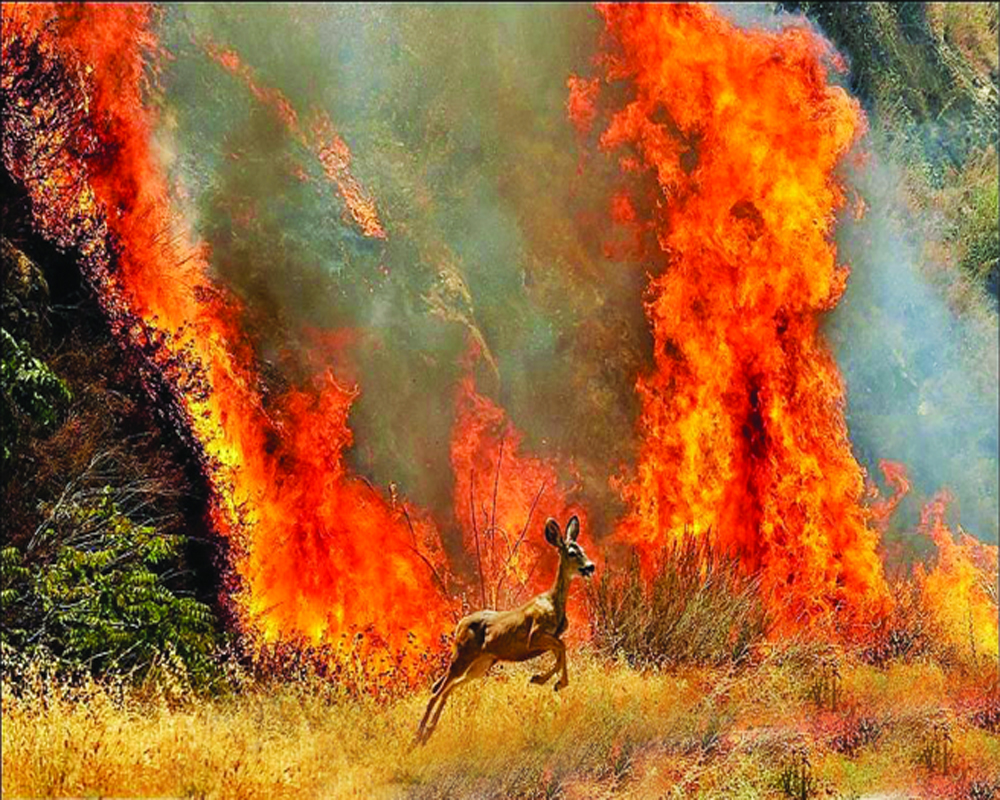There’s an urgent need to stop designating animals as ‘vermin’ as it takes the protective shield of the wildlife Act away from animals
A practice that continues despite strong and reasoned opposition is that of proclaiming species of wild animals as “vermin” and thus putting them out of the ambit of the protective umbrella of the Wildlife (Protection) Act, 1972, the principal instrument for protecting wild animals in India. The wild boar and nilgai have been proclaimed as “vermin” in Uttarakhand, the nilgai and boar in some districts of Bihar, and the rhesus macaque in parts of Himachal Pradesh.
The Act does not define the term “vermin” in terms of what it connotes. It just states in Section 62: “The Central Government may by notification declare any wild animal other than those specified in Schedule I and Part II of Schedule II to be vermin for any area and for such period as may be specified therein and so long as such notification is in force, such wild animal shall be deemed to have been included in Schedule V.” Animals included in Schedule V can be freely hunted.
The Central Government declares an animal as vermin following requests from State Governments and the ground which has been invariably cited is that it causes damage to crops and poses a danger to human life. There have no doubt been cases in which the Centre has withheld permission. The fundamental question, however, is whether there should at all be a provision for designating an animal as “vermin”.
There are several reasons for asking this. For one thing, an article by Anupam Chakravartty, Rajeshwari Ganesan and Rajit Sengupta, published under the heading ‘Enemies of the state?’ in the DownToEarth on June 15, 2016, cites animal rights groups as saying that the drive for killing then underway was based on popular perception rather than data. The country had no data both on the populations of animals proposed to be killed and the extent of crop damage they were supposed to be causing. The article stated that, in fact, Uttarakhand’s proposal on the basis of which the Centre permitted the killing of wild boars, clearly said, “There is no scientific survey or census of the wild boar population that has been carried out. However, since the crop damage caused by wild boar is increasing, the wild boar is estimated to be overpopulated.”
Further, experience shows that once killing is permitted, villagers or designated hunters have frequently not followed the methods prescribed. An example is the case in Kerala where a pregnant cow elephant died following several days of intense agony after she had bitten on a pineapple filled with explosives. Enquiries revealed that the pineapple was intended to kill a wild boar which, as a species, had been declared “vermin”. Also, such a barbaric way of killing was not permitted even in the case of wild boars.
State Governments have doubtless laid down restrictions on the methods and guidelines governing killings — such as only rifles and pistols to be used and no killing of injured animals running away to forests, and hunting only after receiving permission from the forest department concerned and the village pradhan. But who is to ensure compliance? The fact is, methods that are not permitted are often used. These include laying out live wires for animals to be electrocuted, trapping them for murder and poisoning them. There is no guarantee that animals other than those declared as “vermin” would not come into contact with such wires or consume the poison.
The argument that State forest department personnel should watch out for the transgressors and deal harshly with them hardly holds water. It would take a very large number of people and vehicles for doing that. Given that most forest departments have to make do with numerically inadequate staff, deployment on such an errand would leave them with very few people to carry out essential functions like curbing poaching and preventing illegal felling of trees. The result may be a serious diminution of protected species like elephants (for tusks), rhinos (for their horns) and tigers for their body parts which are sought for the manufacture of so-called aphrodisiacs.
Apart from the fact that declaring an entire species of wildlife as vermin is contrary to the spirit and content of Article 51 A (g) of the Constitution which enjoins upon both the Government and all citizens to show compassion to all living creatures, animals can hardly be blamed for damaging standing crops and attacking people. The loss of the vegetation they feed on following the destruction of their habitats through encroachment by expanding human settlements, roads and industries, as well as droughts and forest fires, has driven them to agricultural fields for food.
Humans do not realise that their own predatory exploitation of nature is increasing areas of human-animal conflict and making non-human species extinct at the rate of 3,000 a year. In this process, they are also destroying the environment and the conditions that have made human life possible. They need to realise that they are not the lords of the universe and must live in harmony with the world around them, including plants and animals. The Greek sophist Protagoras’ famous aphorism “Man is the measure of all things” needs to be amended to read, “Humans are the preservers and protectors of all things.”
(The author is Consulting Editor, The Pioneer. The views expressed are personal.)


























